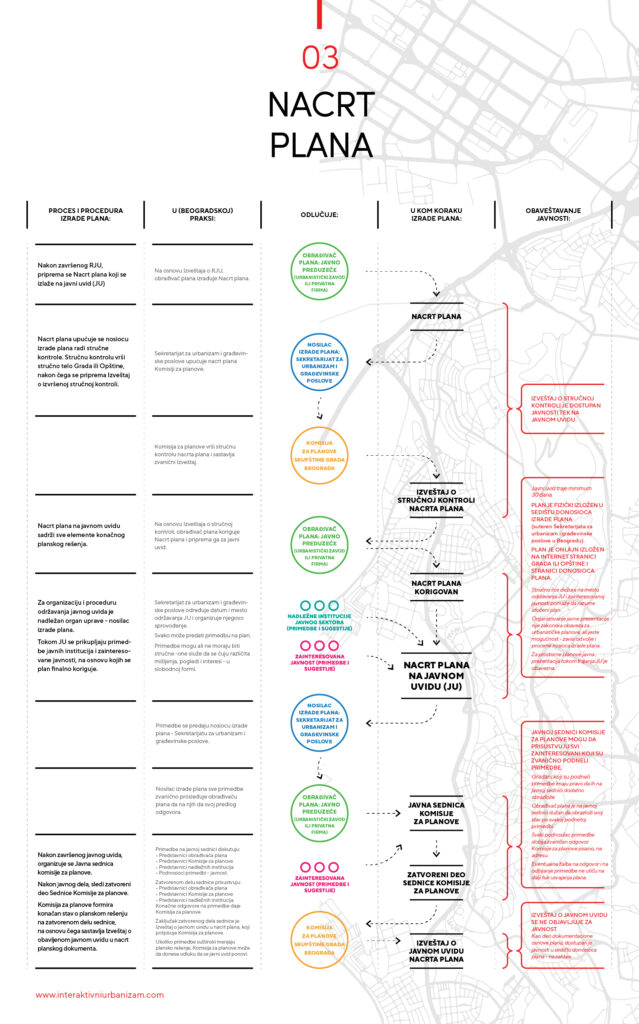Little BIG glossary of urban planning
/ guide
The 4 phases of preparation of the plan
Phase 3: Draft of the urban plan – public insight (JU) and public session
The second opportunity for the citizens to participate in this process is when the draft plan (closer to the final version) is displayed for public insight.
Public insight (JU) lasts for a minimum of 30 days.
In exceptional cases it may last for 15 days – these are the cases of minor changes and additions to the plan (strictly defined by a bylaw) or when the public insight of a segment of the draft plan is repeated.
The methods of informing the citizens on the public insight are the same as on the preceding early public insight – in the seat of the local government; through the web pages of the institution responsible for preparation of the planning documents, the unit of local government, or institutions responsible for preparation or adoption of the plan; and in a daily or local newspaper the responsible authority has a publicity agreement with.
As in the case of the early public insight, the institution responsible for the preparation of the plan has an obligation to provide expert assistance to viewers of the plan on display, which had already become a complex planning document.
Depending on whether an urban or spatial plan is on display, the expert assistance is organized differently:
- During the public insight of an urban plan, a representative of the handler is available for questions from the public, during fixed and previously announced time slots, at the venue of the public insight.
- During the public insight of a spatial plan, at least one public presentation of the plan is mandatory, 10 days before the end of the public insight at the latest.
For public insight of the draft urban plan, a public presentation is prescribed as a possibility, but is not mandatory. Citizens may address a request for public presentation to the responsible authority, which decides whether or not it would be held.
All interested parties may submit their comments on the plan, including the citizens and institutions from the public sector, in the same manner as during the early public insight (records office, or where it is practiced, mail).
Completed public insight is followed by the public session of the Planning Commission.
It may be attended by all interested parties, and the citizens who had previously submitted an objection have a right to explain it additionally.
Handler of the plan has an obligation to explain to the audience his response to each of the submitted objections.
The public part is followed by the closed part of the session of the Planning Commission. Here, the Planning Commission formulates its final stand on the planning proposal. Based on this, and all other data from the public insight, the Report on the completed public insight of the draft of the planning document is composed. As part of the documentation basis, the report is available to the public on demand in the seat of the institution responsible for adoption of the plan, during the whole period of validity of the planning document.
The draft plan is corrected in accordance with the public insight report and addressed further in the procedure of adoption.
